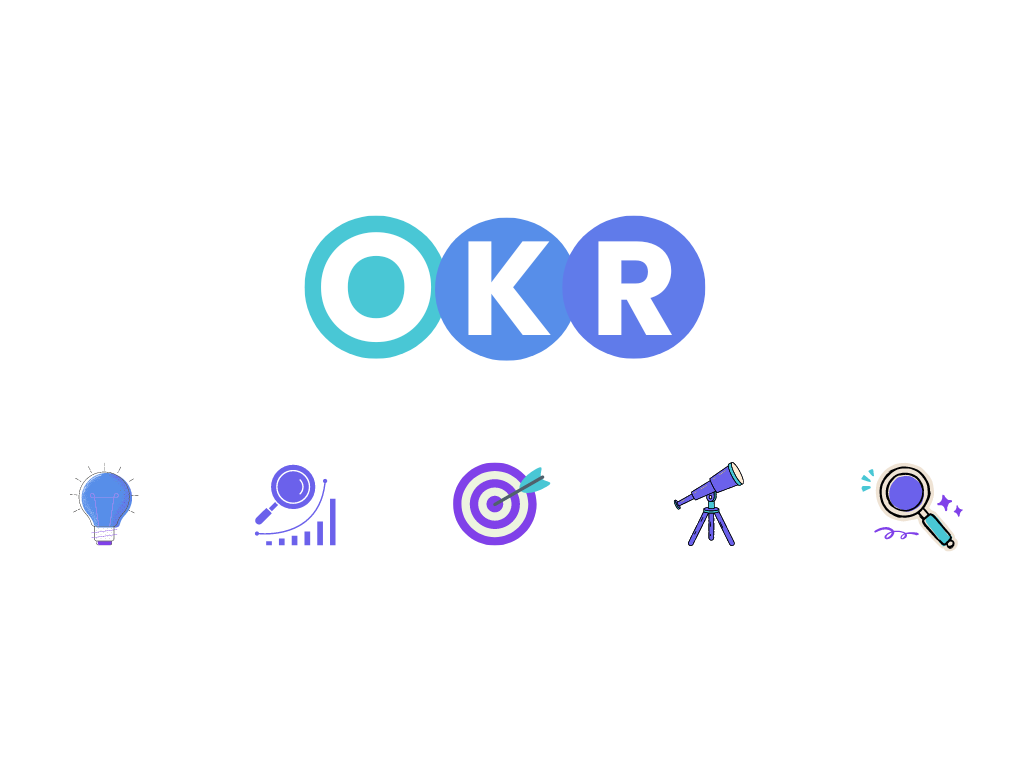Objectives are future-oriented goals that set the direction for an organization or team. They act as a destination on a map, providing a clear and compelling vision of where the organization wants to go. Objectives should be easy to understand, memorable, and inspiring. Importantly, they should avoid technical jargon and metrics, focusing instead on a broad and motivating goal.
For example, an Objective might be: “Our customers are the happiest they’ve ever been.” This Objective is clear, aspirational, and provides a direction for the organization.
Key Results are quantifiable outcomes that help specify and measure progress towards the Objective. They must contain a metric with a start and target value, providing a concrete way to track success. Key Results should focus on outcomes rather than outputs, emphasizing the results of actions rather than the actions themselves.
For instance, a Key Result for the Objective mentioned above might be: “Increase customer satisfaction score from 80 to 90.” This Key Result is specific, measurable, and directly tied to the Objective.
Initiatives are the projects and tasks undertaken to make progress on Key Results. They represent the actions or means to achieve the desired outcomes. Initiatives should be practical and actionable, providing a clear path to reaching the Key Results.
An example of an Initiative could be: “Hire two new support agents to improve customer service response times.” This Initiative outlines a specific action that will help achieve the Key Result and, ultimately, the Objective.
The OKR framework has a rich history that dates back to the mid-20th century. It originated from Peter Drucker’s Management By Objectives (MBO) concept, introduced in 1954. MBO focused on setting specific, measurable goals to improve organizational performance.
In 1968, Andrew Grove of Intel further developed MBO into the OKR framework. Grove’s adaptation emphasized the importance of setting ambitious goals and measuring progress through key results. This approach resonated with the tech industry, leading to widespread adoption.
John Doerr, a venture capitalist and early investor in Google, introduced OKR to Google’s founders, Larry Page and Sergey Brin. Google implemented OKRs, finding great success in using the framework to drive innovation and achieve their ambitious goals. Today, OKRs are used by many leading companies worldwide, including LinkedIn, Twitter, and Spotify.
One of the key benefits of the OKR framework is its ability to improve alignment across an organization. By setting clear Objectives and measurable Key Results, OKRs ensure that everyone in the organization is working towards a common goal. This alignment is crucial for effective goal attainment and overall organizational success.
Before implementing OKRs, it’s essential to have a clear strategy in place. Strategy defines the organization’s purpose, the playing field, and what winning looks like. It includes the Ultimate Goal and Strategic Pillars that guide the organization’s efforts.
A well-defined strategy serves as the foundation for all OKRs. It inspires and informs the Objectives, ensuring they are aligned with the organization’s long-term vision and priorities. Without a clear strategy, OKRs can become disjointed and fail to drive meaningful progress.
A well-defined strategy serves as the foundation for all OKRs. It inspires and informs the Objectives, ensuring they are aligned with the organization’s long-term vision and priorities. Without a clear strategy, OKRs can become disjointed and fail to drive meaningful progress.
Alignment is achieved by cascading OKRs throughout the organization. Company-level OKRs set the overall direction, while department and team-level OKRs break down these broader goals into specific, actionable steps. This cascading approach ensures that every team and individual is contributing to the organization’s strategic objectives.
For example, a company-level Objective might be: “Expand market share in the North American region.” A department-level Objective for the sales team could be: “Increase sales in the North American region by 20%.” A team-level Objective for a sales team might be: “Close 30 new deals in the North American region.”
By aligning OKRs at every level, organizations can ensure that all efforts are focused on achieving the same overarching goals.
Successfully implementing OKRs requires more than just understanding the framework; it involves adopting best practices that promote effective goal-setting and tracking. Here are some key practices to consider:
It’s tempting to set numerous Objectives, but this can dilute focus and lead to mediocre results. Instead, prioritize a few critical Objectives that will have the most significant impact on the organization. This approach ensures that resources and efforts are concentrated on what truly matters.
Ensure that all OKRs are aligned with the organization’s strategy. This alignment ensures that every goal contributes to the broader mission and vision, driving the organization toward its Ultimate Goal.
Transparency is vital in OKR implementation. Making goals visible to everyone in the organization helps align efforts and fosters a shared understanding of objectives. It also promotes accountability, as everyone can see progress towards the goals.
OKRs and KPIs serve different purposes but complement each other. OKRs are about setting and achieving ambitious goals, driving innovation, and breaking the status quo. KPIs, on the other hand, are performance measurements that evaluate ongoing processes or activities.
Think of OKRs as the roadmap guiding the organization towards its destination, while KPIs are the dashboard indicators monitoring the vehicle’s performance. Both are essential for organizational success, but they must be used in tandem to maximize their effectiveness.
Creating a regular pattern or rhythm for setting, updating, reviewing, and closing OKRs is crucial. This rhythm ensures that everyone in the organization knows what is expected of them and when. It also promotes continuous progress and timely adjustments.
A common cadence for OKRs is to set annual OKRs at the company level and quarterly OKRs at the department and team levels. This combination allows for both long-term strategic focus and short-term progress tracking.
Frequent updates and reviews of OKR progress are key to success. Regular check-ins ensure that the organization stays on track and can make informed decisions. Weekly check-ins for quarterly OKRs are often recommended to maintain momentum and address any issues promptly.
Implementing OKRs can seem daunting, but there are resources available to help. Platforms like Perdoo offer practical tools and resources for starting with OKRs. These platforms provide templates, best practices, and guidance on effectively setting and tracking OKRs.
By following these steps and leveraging available resources, organizations can effectively implement OKRs and achieve their ambitious goals.
The OKR framework offers a powerful tool for setting and achieving goals within an organization. By focusing on Objectives, Key Results, and Initiatives, OKRs provide a structured approach to driving progress and innovation.
Understanding the historical roots and evolution of OKRs highlights their significance and widespread adoption in the business world. The importance of strategy and alignment in OKR implementation cannot be overstated, as these elements ensure that every effort contributes to the organization’s broader mission and vision.
Best practices such as focusing on fewer critical objectives, promoting transparency, and establishing a regular rhythm for setting and reviewing OKRs are essential for success. By leveraging practical resources and platforms like Perdoo, organizations can streamline the OKR process and maximize their effectiveness.
Ultimately, the OKR framework empowers organizations to set ambitious goals, drive meaningful progress, and achieve long-term success.








